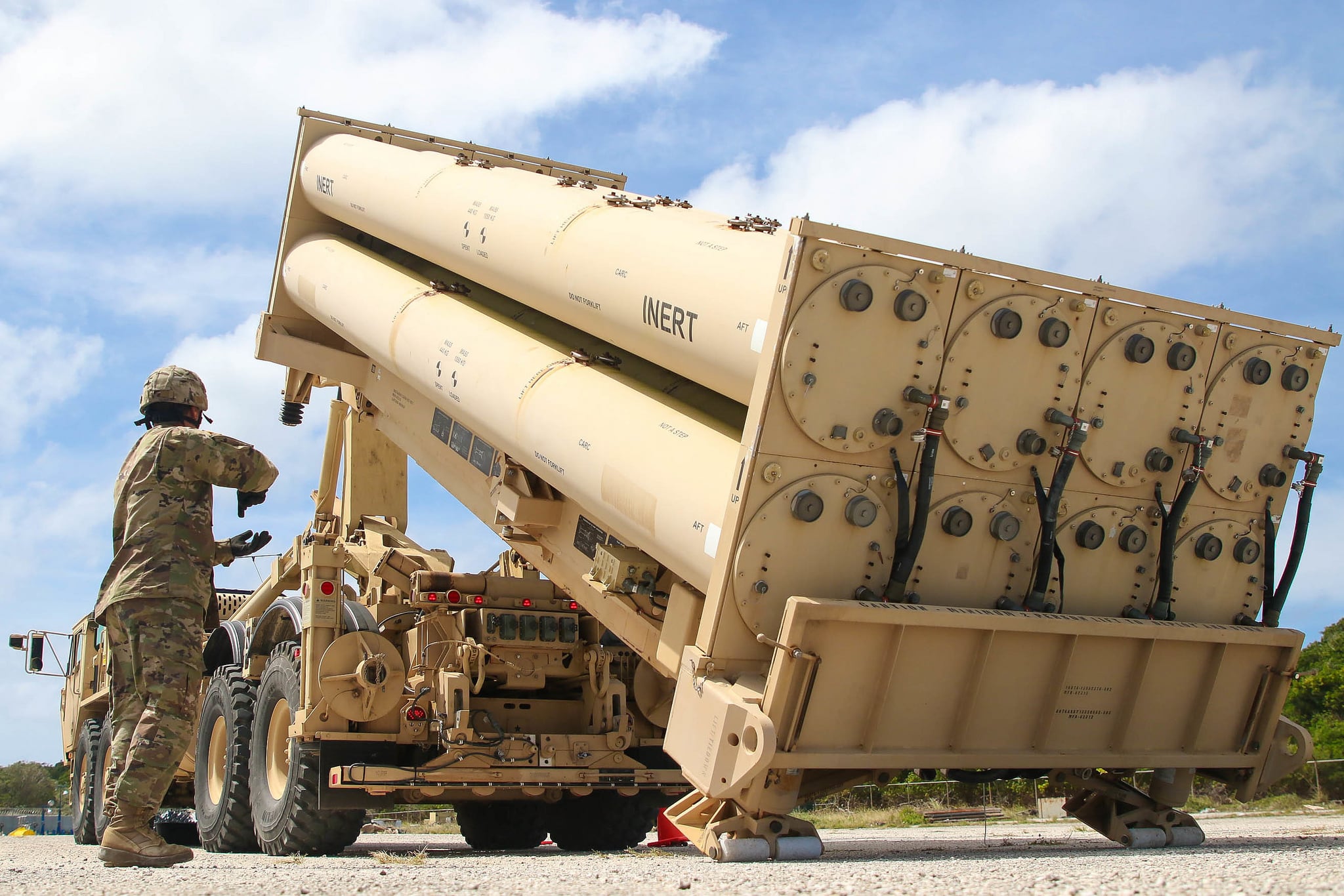WASHINGTON — Congress plans to withhold half of the U.S. Army’s funding for an enduring indirect fire protection system until the service produces a report on its plans to develop and field such a system as well as results on the performance of its interim capability — Rafael’s Iron Dome.
The Army has been trying to develop an indirect fire protection capability system that can defend against not just rockets, artillery and mortars, but also cruise missiles and unmanned aircraft systems.
Last year the Army was required by Congress to field an interim capability that would specifically target cruise missile threats — a gap in capability presently too serious to wait to address until the service develops and fields an enduring system. The service decided earlier this year that it needed to reassess its path forward on the IFPC Increment 2 program, killing certain elements of the system internally under development, such as its multimission launcher.
Brig. Gen. Brian Gibson, who is in charge of the Army’s air and missile defense modernization efforts, told Defense News this month he is confident the service will begin to receive equipment by the end of 2020, and that soldiers will need time to train before the Iron Dome systems are deployed by fiscal 2023.
But the Army is under pressure from Congress, based on language in the FY19 National Defense Authorization Act, to come up with what its enduring system will be before FY23. If the Army doesn’t produce a new plan, it will have to buy more stand-alone interim systems, which it doesn’t want to do.
Gibson told Defense News earlier this year that the Army instead would like to take the best-of-breed launchers, sensors and shooters tied together by the service’s Integrated Air and Missile Defense Battle Command System, or IBCS.
RELATED

According to the FY20 NDAA, the Army won’t get the funding it needs that fiscal year for both its interim and enduring IFPC Increment 2 system until the Army secretary submits a report to all the congressional defense committees. The report must include an assessment of initial and full operational requirements previously established for the enduring system as well as a list of possible systems — already fielded or in development — that could meet the enduring requirement.
The report should also include an assessment of each system’s capability against threats and relevant specifications such as development costs, price tags per round, technological maturity, and logistics and sustainment requirements.
The report should also include a plan for how the service would integrate the systems into IBCS. The Army has a requirement to connect its IBCS — the brains of its missile defense system — to its ballistic missile defense capability and to IFPC as well as other sensors and shooters on the battlefield.
While the Army may not begin training on or evaluation of the Iron Dome systems until 2021 after it receives the equipment needed in 2020, Congress wants the service to include an assessment of the results of the “performance, test, evaluation, integration and interoperability of batteries one and two of the interim solution.”
In addition to a hold on half of the IFPC funds in FY20, the recently passed congressional appropriations bill cut funding to the program by $49 million out of the Army’s $243 million request due to excess funding to fulfill the requirement.
The service, according to Gibson, must choose an enduring capability well in advance of Iron Dome’s initial deployment, which he said means making a recommendation on a plan going forward by the end of FY20.
The congressional language in the FY20 NDAA, he added, shows there remains a key interest from Congress to ensure the Army has a sound plan.
Also within the language on IFPC in the FY20 NDAA, the defense secretary must submit a plan, within 10 days of the submission of the president’s FY21 defense budget request, identifying the military services or agencies that will be responsible for conducting air and missile defense in support of the joint force.
“I think the spirit of intent remains the same in that Congress is interested in making sure that what we do as an Army is supportive of the broader fight but also recognizes the tension that we often find inside the air defense force,” Gibson said. “There’s no silver bullet. You have to have complementary systems on the battlefield,” which he called “complex, from a threat perspective.”
Jen Judson is an award-winning journalist covering land warfare for Defense News. She has also worked for Politico and Inside Defense. She holds a Master of Science degree in journalism from Boston University and a Bachelor of Arts degree from Kenyon College.








